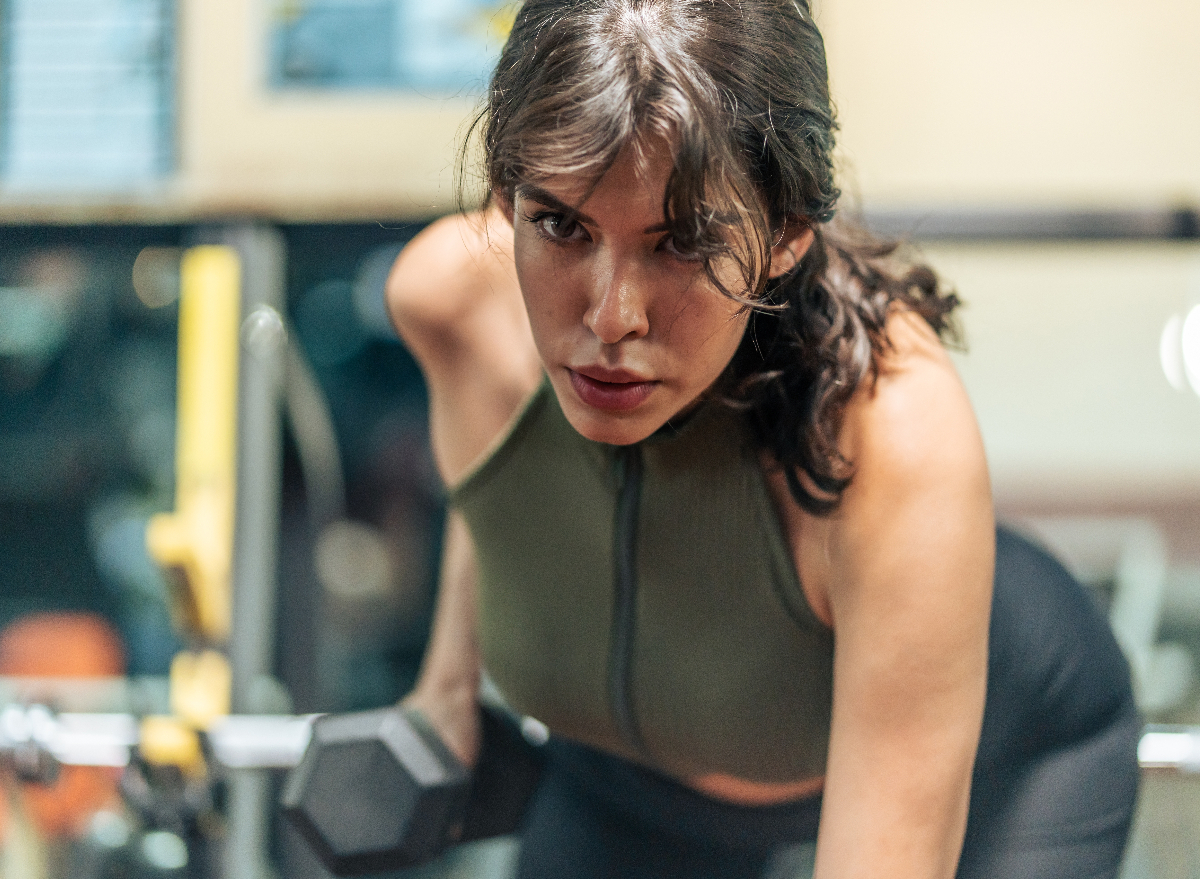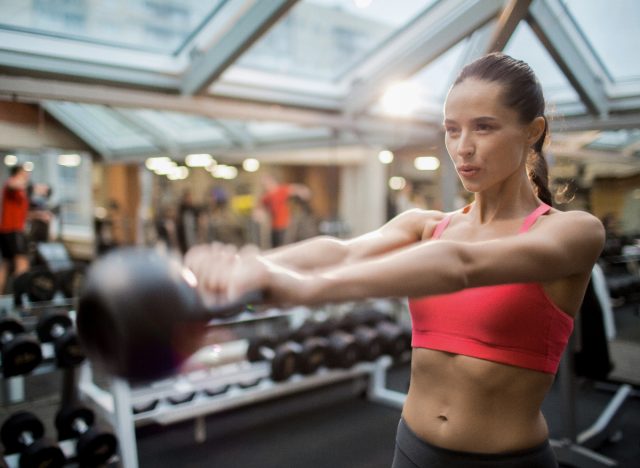The Best Breathing Techniques for Working Out To Get Better Results

Practicing just the right breathing techniques is essential when it comes to working out. Eat This, Not That! reached out to Dr. Mike Bohl, the Director of Medical Content & Education at Ro and a certified personal trainer, who tells us that not only does breathing bring fresh oxygen into your body for your tissues, but it also assists in getting rid of a waste product, carbon dioxide. We’re here to share the best breathing techniques for working out that’ll help you achieve better results. Keep reading to learn more.
The way you breathe is a stellar indicator of how your workout’s going.

Dr. Bohl tells us the way you breathe is actually a great indicator of how your workout is playing out. For example, if you get to a point when your breathing rate escalates making it hard to easily talk to your workout buddy, Dr. Bohl explains, “You’ve reached something called ventilatory threshold 1 (VT1). VT1 is the point at which your body is burning an equal mix of carbohydrates and fat as fuel sources.” He adds, “If you reach a point when you’re breathing so hard that talking becomes nearly impossible (except for 1–2 words), you’ve reached something called ventilatory threshold 2 (VT2). VT2 is the point at which your body is burning nearly entirely glucose for energy.”
Related: What Happens to Your Body When You Work Out 7 Days a Week
Diaphragmatically breathing, or “breathing through the stomach,” is proper breathing technique.

Correct breathing technique revolves around diaphragmatically breathing. Some people refer to this as “breathing through the stomach.” Breathing diaphragmatically involves utilizing your diaphragm to breathe in and out, rather than mostly using accessory breathing muscles, such as the muscles in your neck. Dr. Bohl notes, “It’s normal to use additional muscles for breathing if you are breathing heavily because you’re out of breath.” He adds, “Proper breathing technique can help you maintain the correct posture and efficiently move air in and out of your lungs.”
Typically, we “breathe through the exercise” when working out. Dr. Bohl explains, “When engaging in resistance training, breathe out during the concentric phase (when you’re lifting the weights) and breathe in during the eccentric phase (when you’re putting the weights back down).”
Related: 6 Unhealthy Workout Myths You Need To Stop Believing, Expert Says
Performing the Valsalva maneuver can be beneficial when lifting heavy weights.

Some individuals might “bear down” when performing an exercise—especially if they’re doing heavy weight lifting. “Bearing down” is also known as the Valsalva maneuver. This is when you attempt to breathe out against a closed glottis, “so no air actually comes out,” Dr. Bohl explains. He shares, “Doing the Valsalva maneuver increases pressure inside the chest, which can help stabilize the spine and make it easier to lift very heavy loads,” adding, “However, it shouldn’t be done for long periods of time and shouldn’t be done by people with certain chronic medical conditions (like high blood pressure), as it decreases blood flow back to the heart, increases blood pressure, and can cause dizziness and lightheadedness.”
The box breathing method can provide overall relaxation.

There aren’t specific breathing techniques to practice after a workout. However, when gearing up for exercise, Dr. Bohl says being more mindful of your breathing can be beneficial. Consider the box breathing method for overall relaxation. To do this, inhale, and hold it for a period of four seconds, then exhale and hold your breath for a period of four seconds, then repeat.








